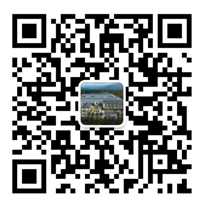Transmission Belt Cloth: The Power Source and Application of Industry
In modern industry, the application of transmission belt fabric is ubiquitous. They play a crucial role in various mechanical equipment, transmitting power from one part to another. This article will delve into the production process of transmission belt fabrics, their types, and their applications in various industries.
Types and production process of transmission belt fabric
The production process of transmission belt fabric involves multiple steps. Firstly, it is necessary to select suitable materials. These materials typically include rubber, plastic, metal, and textiles. Then, these materials are cut into appropriate sizes and formed into a drive belt cloth by hot or cold pressing. Finally, the transmission belt fabric undergoes quality inspection to ensure that it meets all performance requirements.
There are many common types of drive belt fabrics in the market, and the following are some of the main types:
1. Flat belt: It is made of several layers of adhesive canvas and is available in both open edge and wrapped edge styles. High tensile strength, good moisture resistance, and affordable price; Poor heat and oil resistance performance; The open edge style is softer.
2. Woven belts: There are cotton woven, woolen woven, and sewn cotton fabric belts, as well as silk, linen, and nylon woven belts used for high-speed transmission. There are two types of adhesive coated and non adhesive coated surfaces.
3. Nylon sheet composite flat belt: The bearing layer is made of nylon sheets (with single-layer and multi-layer bonding), and the working surface is laminated with chrome tanned leather, adhesive canvas, or special fabrics.
4. V-belts: including ordinary V-belts, narrow V-belts, combined V-belts, automotive V-belts, double-sided V-belts, etc. The bearing layer is made of rope core or rubber curtain fabric, with a wedge angle of 40 and a relative height of approximately 0.7. It is a trapezoidal cross-section circular belt.
5. Circular belt: The cross-section is circular, and there are circular belts, circular rope belts, circular nylon belts, etc.
6. Synchronous toothed belt: A circular belt with trapezoidal or arc-shaped teeth on the working surface and a load-bearing layer such as fiberglass rope and steel wire rope, available in two types: chloroprene rubber and polyurethane rubber.
Application of Transmission Belt Cloth
Drive belt fabrics are widely used in various industries. In mining, they are used to transport ore and other materials. In agriculture, they are used to transport grains and other agricultural products. In food processing, they are used to transport food and beverages. In the manufacturing industry, they are used to transport parts and finished products.
In these applications, the transmission belt fabric not only improves production efficiency but also reduces labor intensity. For example, in mining, conveyor belts can transport a large amount of ore from the depths of the mine to the surface, greatly reducing the labor intensity of miners. In agriculture, conveyor belts can transport a large amount of grains from fields to warehouses, greatly reducing the labor intensity of farmers.
Overall, transmission belt fabric is an important component of modern industrial production. Their production process is complex and precise, requiring precise craftsmanship and high-quality materials. By understanding the production process of transmission belt fabrics, we can better understand their importance in our daily lives. Whether in factories, farms, or supermarkets, transmission belt fabrics are silently playing their role, driving the operation of modern society. The production and application of transmission belt fabric is an important field in modern industrial production, which is worth our in-depth research and exploration.
-
 Email:wanss@kusan-if.com
Email:wanss@kusan-if.com
-
 website:www.kusan.cn
website:www.kusan.cn
-
 business address one:No. 3, Futai Road, Lancun Town, Jimo District, Qingdao, Shandong business address two:No. 99, Fengjin Road, Shangma Street, Chengyang District, Qingdao, Shandong
business address one:No. 3, Futai Road, Lancun Town, Jimo District, Qingdao, Shandong business address two:No. 99, Fengjin Road, Shangma Street, Chengyang District, Qingdao, Shandong

Scan the code
Copyright © 2020-2030 www.kusan.cn Qingdao Jiushan Textile fabric Co., Ltd. All Rights Reserved
website:www.kusan.cn address:No. 3, Futai Road, Lancun Town, Jimo District, Qingdao, Shandong ICP Certificate: ICP Lu No. 20021986-1

 简体中文
简体中文 Japanese
Japanese 한국어
한국어
